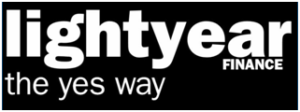Loan Types
We know that buying a property and getting the right home loan all seems really hard and complex, and no one looks like they really want to help. Our mantra is all about making the whole process a lot simpler, to make you feel more confident about some of the biggest decisions you’ll ever make.
This table gives you a really brief definition of the types of home loans you can apply for, plus some advantages and disadvantages of each. We’ll of course help you find the loan that is right for you, but this will give you a quick glimpse at what is available and give you an idea of what might be for you today and in the future.
| Type of Loan | Advantage | Disadvantage |
|---|---|---|
| Variable Home Loan interest rates Most Australian home loans are variable rate loans, with interest rates fluctuating |
If interest rates drop, repayments also drop | If interest rates rise, repayments also rise |
| Fixed Home Loan interest rates A fixed rate loan is a loan that has a fixed interest rate and therefore fixed loan repayments. The time period of these loans can vary, but lenders can usually ‘lock in’ their repayments for between 1-5 years. |
Repayments do not rise if the official interest rate rises – For those who want to know their monthly repayments and keep to a budget | Repayments do not fall if rates fall – Financial penalties may apply if there is any early return to variable rate, or early repayment of the loan |
| Interest-only Home Loans Only interest is paid during an interest only period – usually one to five years. Principal repayments are then paid with interest payments over the remaining term of the loan. Interest only loans are used primarily for property investment |
Lower repayments initially, more money to renovate/improve the property – Cuts the cost of buying a residential investment property in the short-term | If interest rates rise, repayments also rise – There will be sudden increase in repayments at the end of the interest only period as interest rates on I-O loans are generally higher than P&I loans |
| Introductory loans With an introductory loan, the interest rate is usually low to attract borrowers. Also known as a “honeymoon rate”, this rate generally lasts only for around 12 months before it rises. Rates can be fixed or capped. Most revert to the standard rates at the end of the honeymoon period. |
These loans usually provide the lowest repayment rates – Payments are usually lower during the introductory period | Payments usually increase after the introductory period |
| A Split Rate Loan A loan that has one portion of the loan fixed and one portion variable. The borrower can select how much to allocate to each |
Provides some protection against rising interest rates. This gives a blend of repayment flexibility and interest rate security. Often referred to as the best of both worlds | Repayments will still increase if interest rates rise on the variable component |
| Home Equity Loans (Line of Credit) A home equity loan is a line of credit secured by a mortgage over the owner’s property. Borrowers can draw down up to their approved limit, reduce the amount outstanding and then redraw if they want to – the only commitment is to make interest payments. Funds drawn from the facility can be used for lifestyle and investment purposes. |
Borrowers can use the money for whatever purpose they choose | No formal commitment to reduce debt over time |
Source: © Mentor Education Group Pty Ltd MB2 – Operating a Mortgage Broking Business PA 010615 pp6-8 by Peter Andrews

